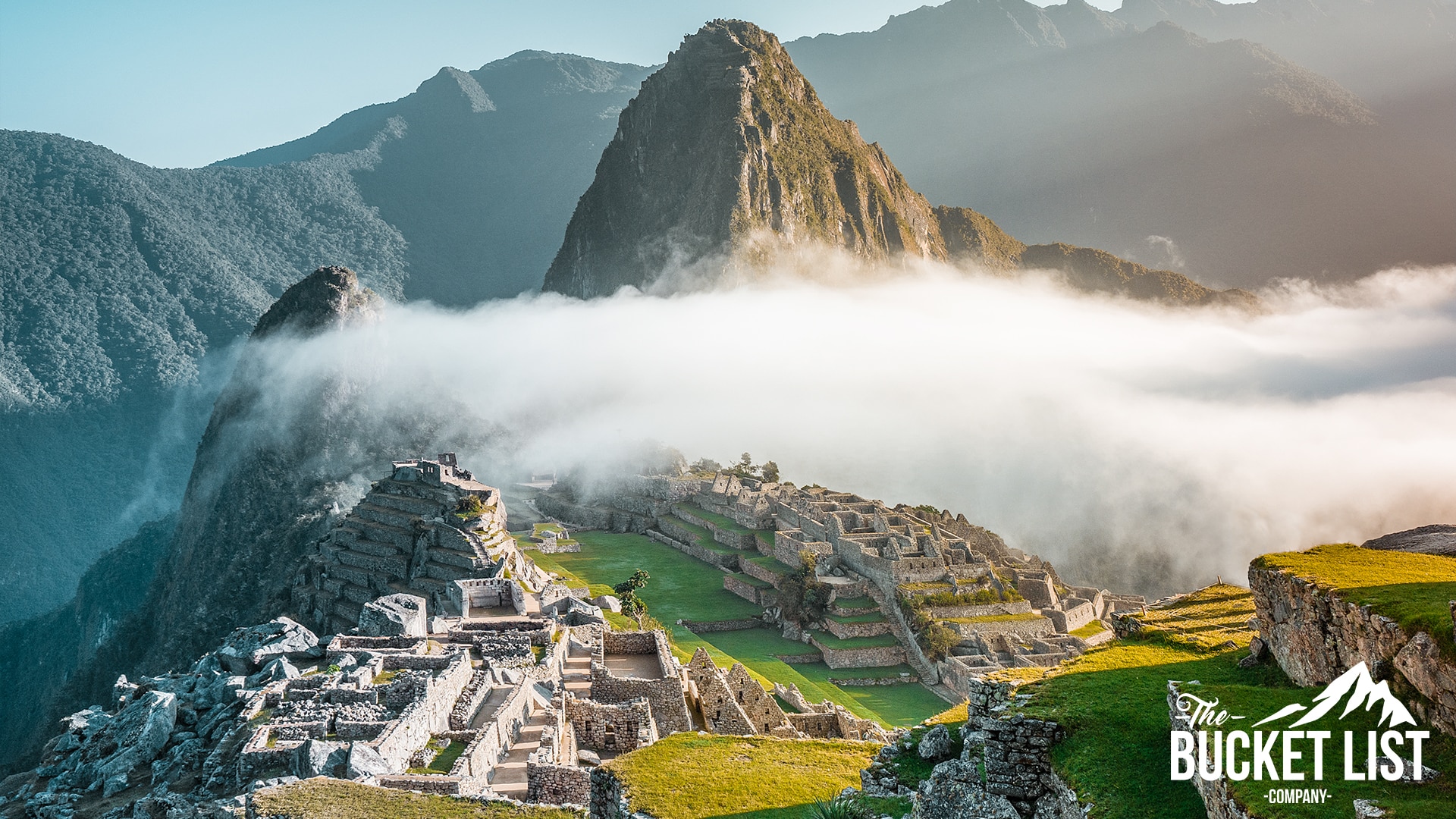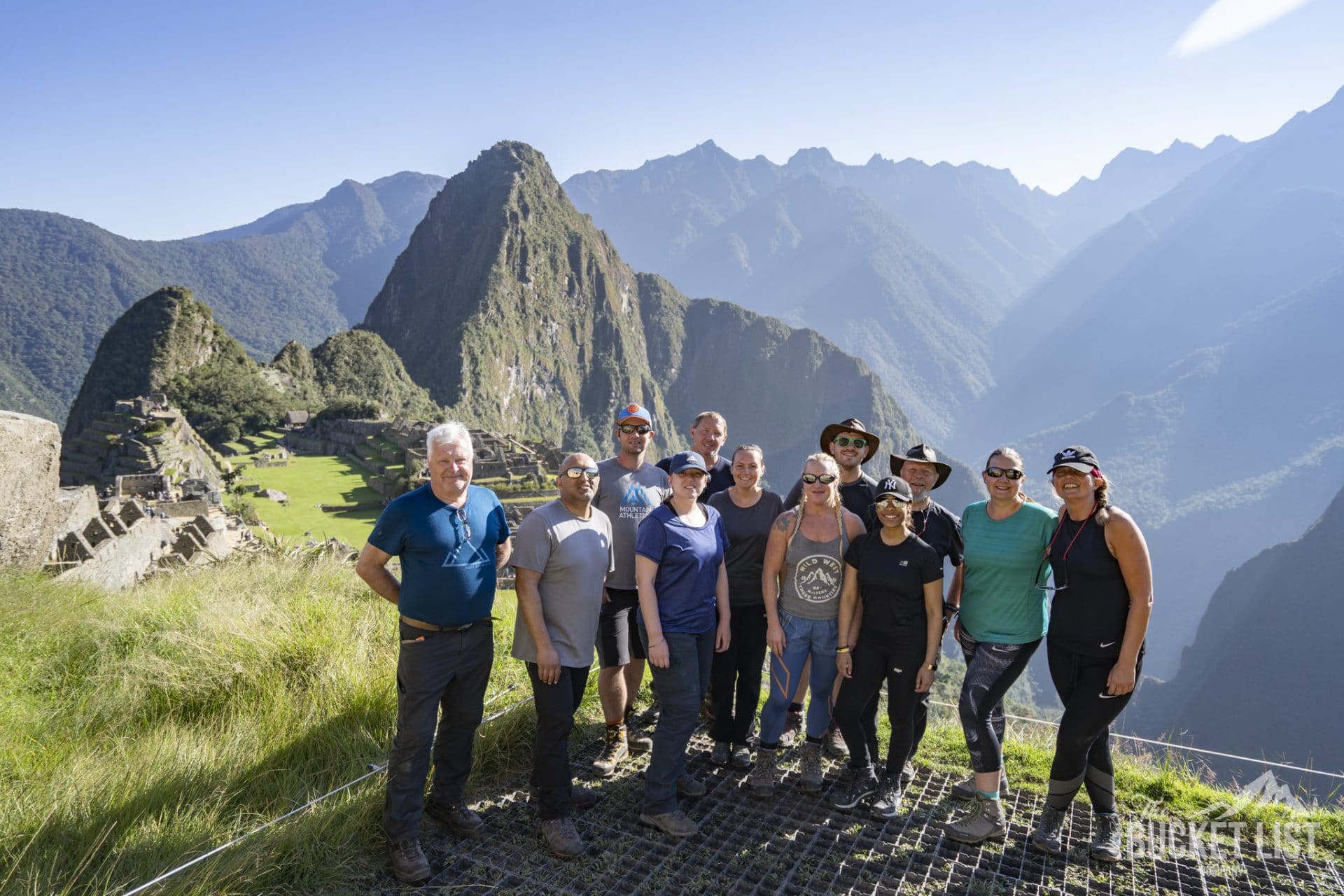There are plenty of things you may already know about Machu Picchu. But, here are 6 Machu Picchu facts you might not know.
The mystery of Machu Picchu has been celebrated and marvelled over for more than a century. But, there’s still so much that we don’t know about this intriguing place.
But if you’re planning to tread the Inca Trail then you’ll want at least some knowledge of what on earth Machu Picchu is before you go. So we’ve put together a quick sheet of Machu Picchu facts to help you get to grips with your destination.
Of course, you’ll learn a heck of a lot more on a real expedition, so if you want to experience Machu Picchu first-hand, head to our South America page here…
It goes without saying that the ancient ruins on the ridge between the Huayna Picchu and Machu Picchu mountains are quite a sight to behold.
But what is it? Who built it? When did it appear? In this short history of Machu Picchu, we’ll cover all the bases.
Machu Picchu facts #1 – “Machu Picchu” could mean
something quite weird.
Google “Machu Picchu meaning” and you might be expecting something about sun, citadels or maybe even palaces.
Well, in Quechua, “machu” means “old” or “old person”, whereas “picchu” means one of two things.
One option is “portion of coca being chewed” – which could create a fascinating Machu Picchu meaning, “old person’s portion of coca being chewed”.
The other meaning of “picchu” is “pyramid or multi-sided solid”, which could sound pretty odd too. But most people simply take this to refer to a mountain. So, the real Machu Picchu meaning is probably something as simple as “Old Mountain”.

Machu Picchu facts #2 – It’s most likely a royal estate
(but, so far, no-one really knows)
Most archaeologists think Machu Picchu was probably a royal estate belonging to Inca emperors and nobles, or perhaps a religious site (hence its sacred mountaintop placement).
The construction style suggests it probably was a palace complex. Possibly belonging to the ruler Pachacuti Inca Yupanqui, who reigned from 1438-1471.
Either way, there are a number of structures around the site that would have enhanced its spiritual significance. Take the Temple of the Sun, for example. Close to where the emperor would have lived, the altar inside receives direct sunlight during the June solstice. Pretty epic stuff.

Machu Picchu facts #3 – it’s NOT
really the “Lost City of the Inca”
Perhaps you’ve heard Machu Picchu being dubbed the “Lost City of the Inca”, but the truth is – it’s not.
The title got confused a good few years back during Hiram Bingham III’s discovery of Machu Picchu in 1911. You see, he was actually looking for a different city when he came across what was to become one of the world’s most famous heritage sites.
The other city in question was Vilcabamba. A hidden capital to which the Inca tribe escaped when the Spanish conquistadors came to Peru in 1532. For many years Vilcabamba became known as the Lost City of the Inca and when Bingham mistakenly discovered Machu Picchu instead, he argued that they were one and the same place, and that he’d been successful all along!
Funnily enough, his theory that Machu Picchu and Vilcabamba were both the Lost City wasn’t proven wrong until after his death. More recent research suggests that Machu Picchu was never really forgotten at all. There were three families of farmers living there when Bingham arrived in 1911 after all…

Machu Picchu facts #4 – It might have been abandoned because of the Spanish conquest, or maybe because of smallpox!
Historians reckon Machu Picchu was built some time in the 15th century, during the height of the Inca Empire which dominated western South America around that time.
But it didn’t last long.
It’s suggested that the incredibly intricate site was abandoned only 100 years after it was built. This was around the time the Spanish kickstarted their conquest of the pre-Columbian civilization in the 1530s.
That could just be a coincidence though, since there’s no real evidence to show the Spaniards ever reached the mountaintop citadel. Some think it might have been abandoned because of something altogether different, perhaps a smallpox epidemic.

Machu Picchu facts #5 – the construction methods
used to build it will blow your mind
Covering a whopping 80,000 acres, including terraced fields at the edge of the site and a mass of buildings from houses to temples and baths to sanctuaries, the place is in excellent nick, very well preserved indeed.
The stepped agricultural terraces surrounding the southern, eastern and western sides would historically have been watered by an aqueduct system. Some of them were still being used by local farming families when Bingham arrived in 1911.
Interestingly, engineers believe that some 60% of the construction done at the site was underground, including deep foundations and crushed rock laid low for drainage.
Then you’ve got thousands upon thousands of steps and walkways made from stone blocks to connect the various plazas with the residential areas, cemetery and larger “probably-palace” buildings.

Machu Picchu facts #6 – You can climb two peaks while you’re there
You won’t be surprised to hear that this is our favourite of all our Machu Picchu facts. Also, if you’re a climber too, you’ve probably just promoted this place up a level on your Bucket List.
Each day at dawn, eager hikers queue at the bus depot at Aguas Calientes. Hoping of being one of only 400 people permitted to climb Huayna Picchu. That’s the small green peak you’ll have spotted in the background of plenty of Machu Picchu pictures.
But virtually no-one bothers to climb the beautiful peak that anchors the other end of the site, Machu Picchu Mountain. It’s twice as tall as Huayna Picchu and offers incredible views of the stunning area around the ruins.
Truly, it’s no wonder this place gained UNESCO World Heritage Site status in the eighties. And if you’re a lover of the epic or an archaeology nut, you’ve got to put Machu Picchu on your Bucket List.

 Basket
Basket




